This EduRev document offers 20 Multiple Choice Questions (MCQs) from the topic Tables (Level - 1). These questions are of Level - 1 difficulty and will assist you in the preparation of CAT & other MBA exams. You can practice/attempt these CAT Multiple Choice Questions (MCQs) and check the explanations for a better understanding of the topic.
Question for Practice Questions Level 1: Tables
Try yourself:Directions: In the table below, the numbers of students studying in different standards of six different schools are given. Study the table carefully to answer the question that follows.

What is the ratio of the total number of students studying in Class III of schools A and B and the total number of students studying in Class VI of schools C and D?
Explanation
Let X = Students studying in standard III of schools A and B together = 48 + 58 = 106
Let Y = Students studying in standard VI of schools C and D together = 54 + 50 = 104
Ratio = X : Y = 106 : 104 = 53 : 52
Report a problem
Question for Practice Questions Level 1: Tables
Try yourself:Directions: In the table below, the numbers of students studying in different standards of six different schools are given. Study the table carefully to answer the question that follows.

The number of students studying in standard IV from school E is what percent of that from school D?
Explanation
The number of students studying in standard IV from school E = 55
The number of students studying in standard IV from school D = 40
Required percent = (55/40) × 100 = 137.5%
Report a problem
Question for Practice Questions Level 1: Tables
Try yourself:Directions: In the table below, the numbers of students studying in different standards of six different schools are given. Study the table carefully to answer the question that follows.

What is the approximate average number of students studying in standard I in all the schools?
Explanation
Total number of students studying in standard I in all the schools
= 42 + 50 + 40 + 45 + 48 + 52 = 277
Average number of students studying in standard I = 277/6 = 46.17
= 46 (approximately)
Report a problem
Question for Practice Questions Level 1: Tables
Try yourself:Directions: Study the table given below and answer the question that follows.
The given table shows the production of rice and wheat in various parts of a country during 1986 to 1992. All the figures are in '000 tonnes.
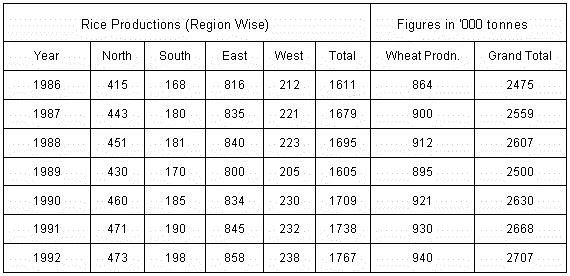
The ratio of rice production to wheat production in 1989 is
Explanation
Rice production in 1989 = 1605 thousand tonnes
Wheat production in 1989 = 895 thousand tonnes
Ratio = 1605/895 = 321/179
Report a problem
Question for Practice Questions Level 1: Tables
Try yourself:Directions: Study the table given below and answer the question that follows.
The given table shows the production of rice and wheat in various parts of a country during 1986 to 1992. All the figures are in '000 tonnes.
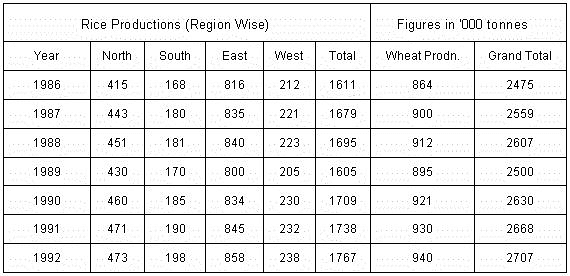
Between 1990-92, the fastest percentage increase in production of rice was in the
Explanation
Report a problem
Question for Practice Questions Level 1: Tables
Try yourself:Directions: Study the table given below and answer the question that follows.
The given table shows the production of rice and wheat in various parts of a country during 1986 to 1992. All the figures are in '000 tonnes.
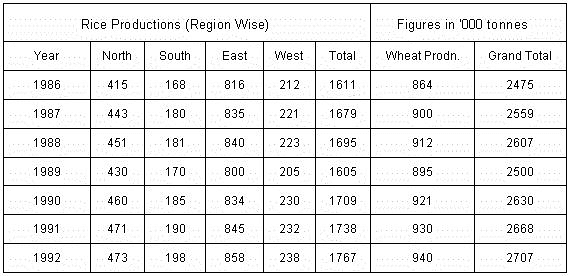
From 1986-92, wheat production went up by approximately
Explanation
Rate of increase of wheat production = ((940 - 864)/864) x 100 = 8.8%
Report a problem
Question for Practice Questions Level 1: Tables
Try yourself:Directions: Study the table given below and answer the question that follows.
The given table shows the production of rice and wheat in various parts of a country during 1986 to 1992. All the figures are in '000 tonnes.
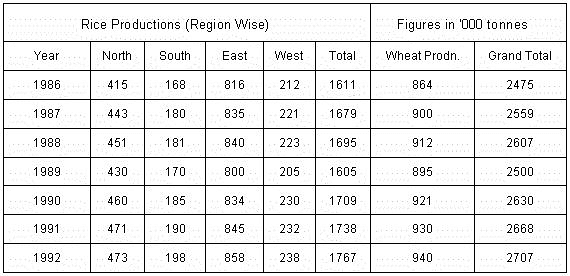
What is the approximate per capita production of rice and wheat in the year 1992? (Population of the country is approximately 900 million.)
Explanation
Per capita production of rice and wheat in 1992 =  = 3.0 kg
= 3.0 kg
Report a problem
Question for Practice Questions Level 1: Tables
Try yourself:Directions: Study the given data and answer the following question.
The following table gives marks scored by ten students in different subjects (out of 100):
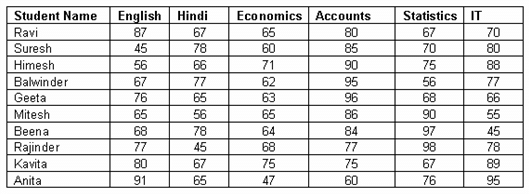
Who ranked first?
Explanation
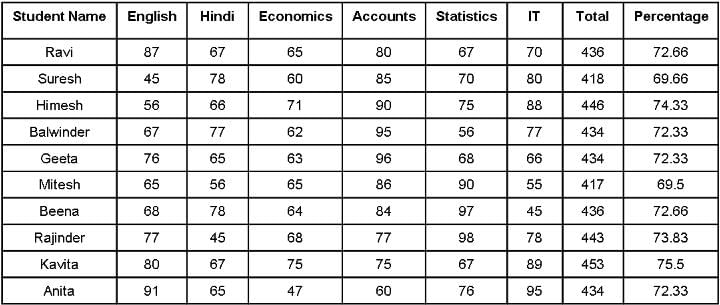
Kavita ranked first.
Report a problem
Question for Practice Questions Level 1: Tables
Try yourself:Directions: Study the following table carefully to answer the given question.

The number of articles sold by company E in the year 2003 is what percent of the number of articles manufactured by it in that year? (Rounded of to two digits after decimal)
Explanation
Number of articles (in thousands) sold by company E in the year 2003 = 17.7
Number of articles (in thousands) manufactured by company E in the year 2003 = 26.2
Required percentage = (17.7/26.2) × 100 = 67.56%
Report a problem
Question for Practice Questions Level 1: Tables
Try yourself:Directions: Answer the given question based on the following table:
MARKET SHARES OF 165 LITRES REFRIGERATORS IN 1998-99 (IN THOUSANDS)

The least number of refrigerators that Kelvinator must have had in stock at the beginning of 1998-99 was
Explanation
Since sales are 104% of production for Kelvinator, the excess 4% must be the stock at the beginning of 1998-99.
Hence, least stock = (4/100) × (340) = 13.6 thousands = 13.6 × 1000 = 13,600
Report a problem
Question for Practice Questions Level 1: Tables
Try yourself:Directions: Answer the given question based on the following table:
MARKET SHARES OF 165 LITRES REFRIGERATORS IN 1998-99 (IN THOUSANDS)

Which company had the highest sales-to-installed capacity ratio in 1998-99?
Explanation
Report a problem
Question for Practice Questions Level 1: Tables
Try yourself:Directions: Answer the given question based on the following table:
MARKET SHARES OF 165 LITRES REFRIGERATORS IN 1998-99 (IN THOUSANDS)

What is the total approximate sales as a percentage of production in 1998-99 for all companies together?
Explanation
The total production = 980
Total sales = [451 × 0.88 + 340 × 1.04 + 10 × 0.6 + 143 × 0.92 + 36 × 0.77 + 0 × 0 ] = 396.88 + 353.60 + 6.00 + 131.56 + 27.72 = 915.76
Total sales as a percentage of production in 1998-99 for all companies together = (915.76 x 100)/980 = 93.44
Report a problem
Question for Practice Questions Level 1: Tables
Try yourself:Directions: Study the given information and answer the following question.
In the table given below, marks obtained by different students in different subjects are listed:

Calculate the average marks obtained by all the students combined in Science.
Explanation
Sum of marks obtained by all the students in Science = 65 + 62 + 55 + 70 + 49 + 44 = 345
Average marks obtained by all the students combined in Science = 345/6 = 57.5
Report a problem
Question for Practice Questions Level 1: Tables
Try yourself:Directions: Study the given information and answer the following question.
In the table given below, marks obtained by different students in different subjects are listed:
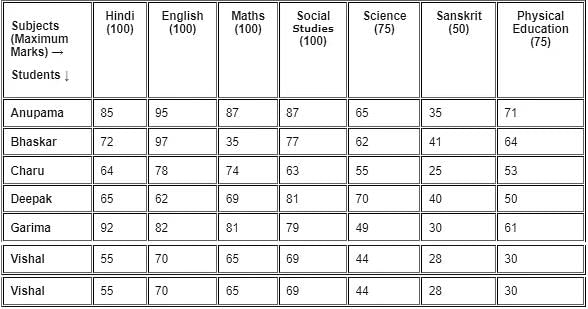
Marks obtained by Charu in Hindi are what percent of the marks (up to two digits after decimal) obtained by Anupama in the same subject?
Explanation
Charu got 64 marks in Hindi out of 100.
Anupama got 85 marks out of 100.
Required Percentage = (64/85) x 100 = 75.29%.
Report a problem
Question for Practice Questions Level 1: Tables
Try yourself:Directions: Study the given information and answer the following question.
In the table given below, marks obtained by different students in different subjects are listed:
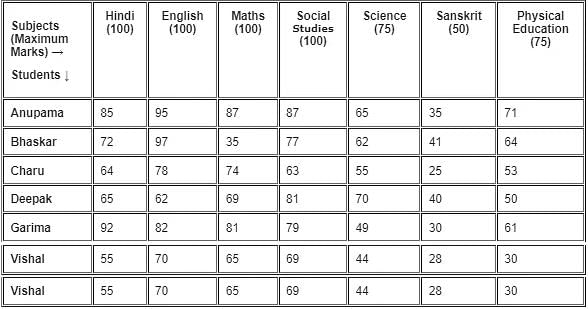
What is the percent of Deepak's marks (up to two digits after decimal) in all the subjects?
Explanation
Total marks obtained by Deepak in all subjects = 65 + 62 + 69 + 81 + 70 + 40 + 50 = 437
Maximum marks = 100 + 100 + 100 + 100 + 75 + 75 + 50 = 600
Deepak got 437 marks out of 600 and his percentage is (437/600) x 100 = 72.83%.
Report a problem
Question for Practice Questions Level 1: Tables
Try yourself:Directions: Study the given information and answer the following question.
In the table given below, marks obtained by different students in different subjects are listed:
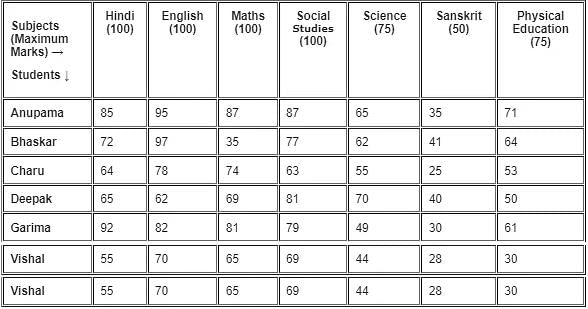
Who scored the highest marks in all the subjects combined?
Explanation
Anupama's total marks = 85 + 95 + 87 + 87 + 65 + 35 + 71 = 525
Bhaskar's total marks = 72 + 97 + 35 + 77 + 62 + 41 + 64 = 448
Charu's total marks = 64 + 78 + 74 + 63 + 55 + 25 + 53 = 412
Deepak's total marks = 65 + 62 + 69 + 81 + 70 + 40 + 50 = 437
Garima's total marks = 92 + 82 + 81 + 79 + 49 + 30 + 61 = 474
Vishal's total marks = 55 + 70 + 65 + 69 + 44 + 28 + 30 = 361
Hence, Anupama scored the highest marks in all the subjects combined.
Report a problem
Question for Practice Questions Level 1: Tables
Try yourself:Directions: Answer the given question based on the following table.
PRODUCTION OF DIFFERENT PRODUCTS OF XYZ CORPORATION:
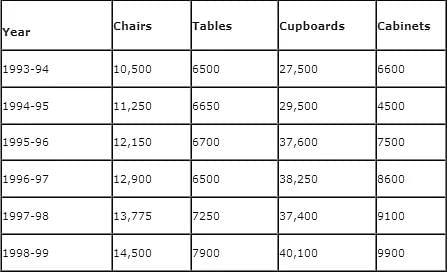
During 1997-98, which of the following products showed a decrease in production in comparison to the previous year?
Explanation
It is clear from the table that there was a decrease in production of cupboards in 1997-98 as compared to the previous year.
Report a problem
Question for Practice Questions Level 1: Tables
Try yourself:Directions: Answer the given question based on the following table.
PRODUCTION OF DIFFERENT PRODUCTS OF XYZ CORPORATION:
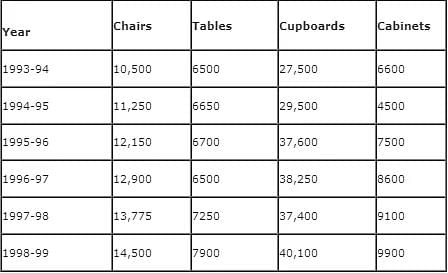
What was the average production of cabinets from 1993-94 to 1997-98?
Explanation
Average production of cabinets = (6600 + 4500 + 7500 + 8600 + 9100)/5 = 7260
Hence, option 1 is the correct answer.
Report a problem
Question for Practice Questions Level 1: Tables
Try yourself:Directions: In the table, the numbers of workers working in various factories in various shifts are given. Study the table carefully and answer the question given below.
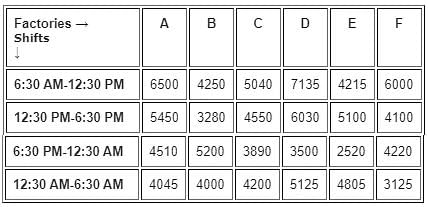
What is the difference between the average number of workers working in factory B and the average number of workers working in factory F?
Explanation
Total number of workers working in factory B = 4250 + 3280 + 5200 + 4000 = 16,730
Average number of workers working in factory B = 16,730/4 = 4182.5
Total number of workers working in factory F = 6000 + 4100 + 4220 + 3125 = 17,445
Average number of workers working in factory F = 17445/4 = 4361.25
Difference = 4361.25 - 4182.5 = 178.75
Report a problem
Question for Practice Questions Level 1: Tables
Try yourself:Directions: In the table, the numbers of workers working in various factories in various shifts are given. Study the table carefully and answer the question given below.

What is the ratio of the total number of workers working in the shift 6:30 AM - 12:30 PM from all the factories together to the total number of workers working in the shift 12:30 AM - 6:30 AM from all the factories together?
Explanation
Total number of workers working in all factories in the shift 6:30 A.M - 12:30 P.M = 6500 + 4250 + 5040 + 7135 + 4215 + 6000 = 33,140
Total number of workers working in all factories in the shift 12:30 A.M - 6:30 A.M = 4045 + 4000 + 4200 + 5125 + 4805 + 3125 = 25,300
Ratio = 33,140 : 25,300 = 1657 : 1265
Report a problem


























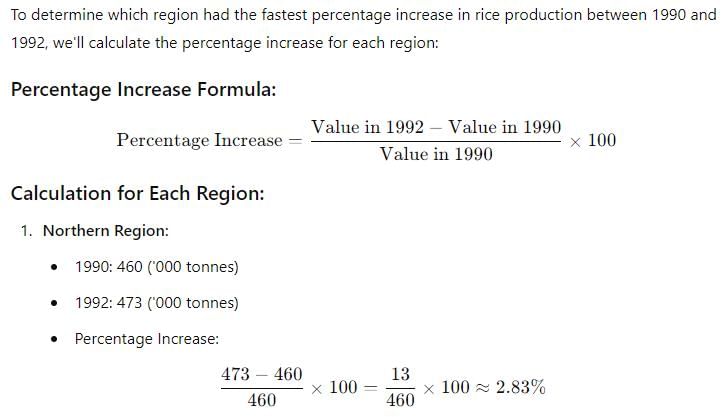
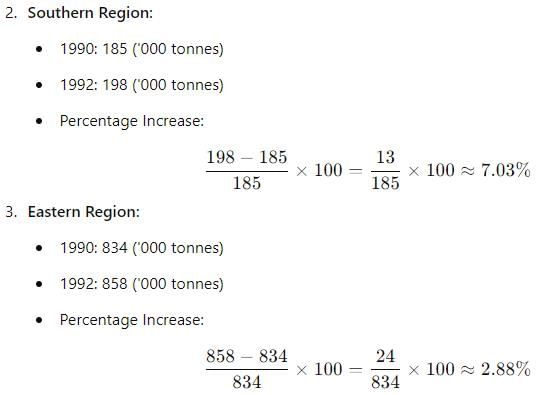
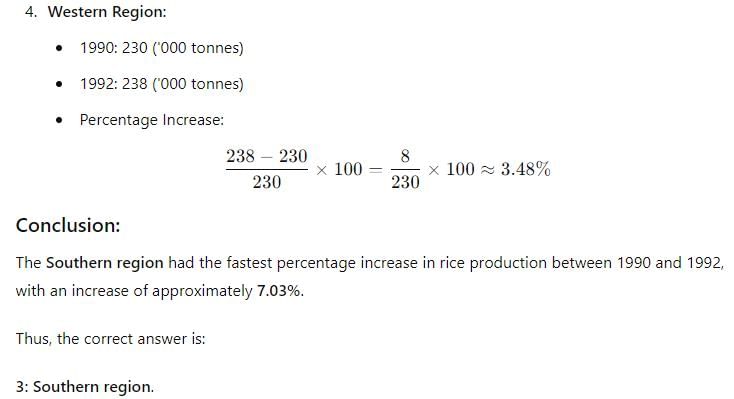
 = 3.0 kg
= 3.0 kg



















